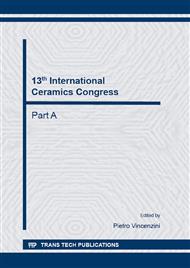p.79
p.85
p.91
p.98
p.105
p.113
p.118
p.126
p.132
A Mixed SVD-Neural Network Approach to Optimal Control of Ceramic Mould Manufacturing in Lost Wax Cast Processes
Abstract:
We account for the problem of optimal control of ceramic mould manufacturing in lost wax cast processes with the aid of a mixed linear algebraic-statistical approach based on the employment of Singular Value Decomposition (SVD) and Neural Networks (NN).We consider the peculiar aspect of minimizing ceramic inclusions occurrence in equiaxed superalloy turbine components which are manufactured resorting to gravitational pouring. The optimization consists in finding optimal extrema of scalar and/or vectorial functions of the type Rk->Rm i.e. Key Process Variable domain (KPV) vs. Target Variable domain (TV) over a large set of experimental data affected by acquisition noise leading to a typical sparse multiblock array.The goal of the work consists in the assessment of possible significant statistical multivariate correlations amongst the KPV and TV when the dimension of domain space, k, has an order of magnitude of tens, in the presence of quasi-rank deficient input matrix.
Info:
Periodical:
Pages:
105-112
Citation:
Online since:
October 2014
Price:
Сopyright:
© 2014 Trans Tech Publications Ltd. All Rights Reserved
Share:
Citation:


